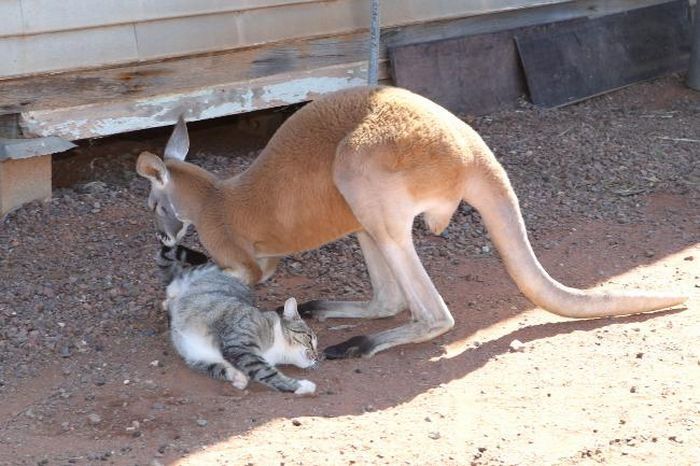|
|
Beemer, Pet Kangaroo
|
- The red kangaroo (Macropus rufus) is the largest surviving marsupial anywhere in the world. The Red Kangaroo occupies the arid and semi-arid centre of the country. The highest population densities of the Red Kangaroo occur in the rangelands of western New South Wales. Red kangaroos are commonly mistaken as the most abundant species of kangaroo, but eastern greys actually have a larger population. A large male can be 2 metres (6 ft 7 in) tall and weigh 90 kg (200 lb).
- The eastern grey kangaroo (Macropus giganteus) is less well-known than the red (outside Australia), but the most often seen, as its range covers the fertile eastern part of the country. The range of the Eastern Grey Kangaroo extends from the top of the Cape York Peninsula in north Queensland down to Victoria, as well as areas of south-eastern Australia and Tasmania. Population densities of Eastern Grey Kangaroos usually peak near 100 per km2 in suitable habitats of open woodlands. Populations are more limited in areas of land clearance, such as farmland, where forest and woodland habitats are limited in size or abundance.
- The western grey kangaroo (Macropus fuliginosus) is slightly smaller again at about 54 kg (119 lb) for a large male. It is found in the southern part of Western Australia, South Australia near the coast, and the Darling River basin. The highest population densities occur in the western Riverina district of New South Wales and in western areas of the Nullarbor Plain in Western Australia. Populations may have declined, particularly in agricultural areas. The species has a high tolerance to the plant toxin sodium fluoroacetate, which indicates a possible origin from the south-west region of Australia.
- The antilopine kangaroo (Macropus antilopinus) is, essentially, the far-northern equivalent of the eastern and western grey kangaroos. It is sometimes referred to as the ‘Antilopine Wallaroo,’ but in behaviour and habitat it is more similar to Red and grey kangaroos. Like them, it is a creature of the grassy plains and woodlands, and gregarious. Their name comes from their fur, which is similar in colour and texture to that of antelopes. Characteristically, the noses of males swell behind the nostrils. This enlarges nasal passages and allows them to release more heat in hot and humid climates.
|
|









